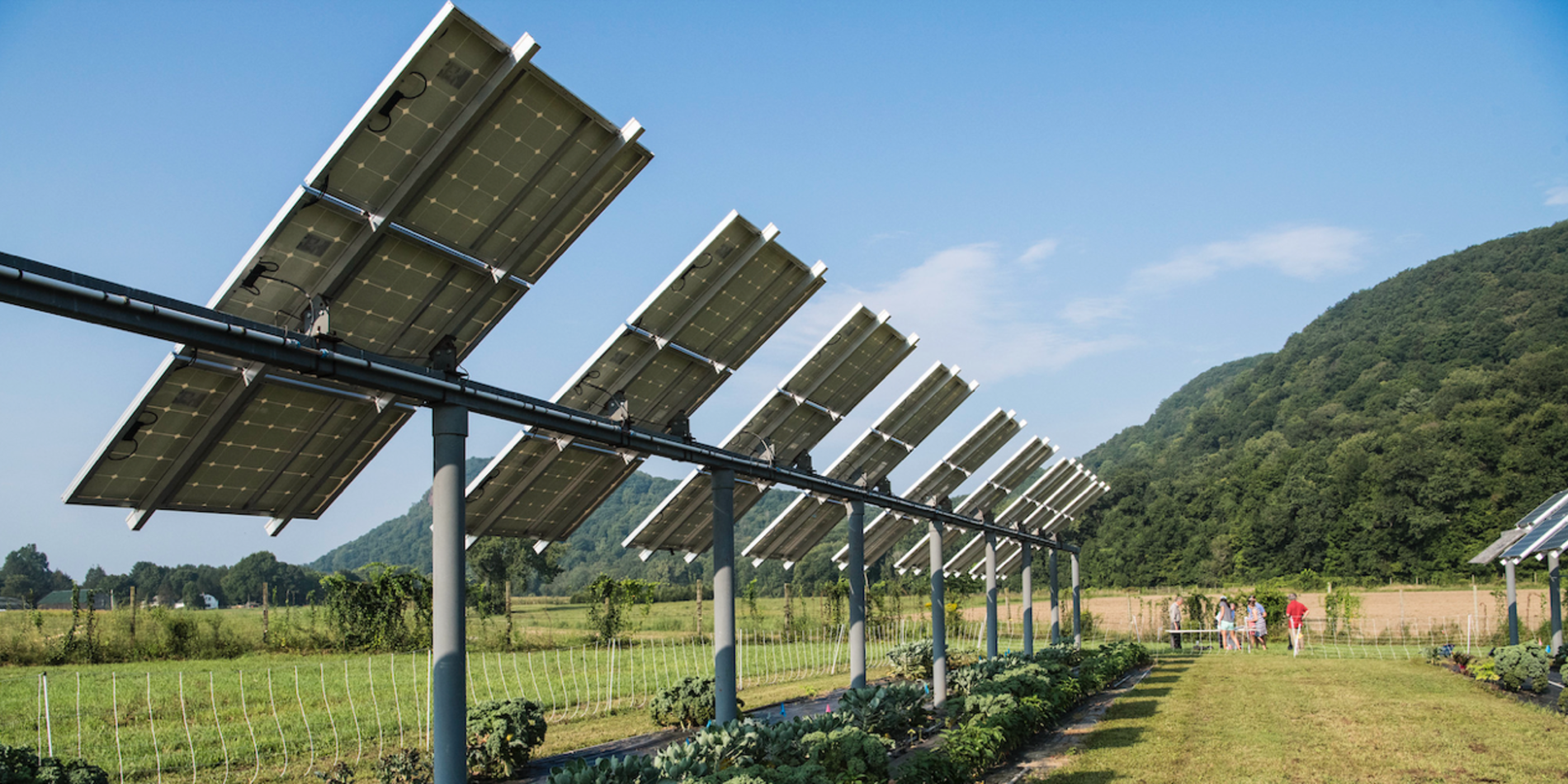New grants for energy research help faculty explore fresh ideas
Stanford University’s TomKat Center for Sustainable Energy and Precourt Institute for Energy have awarded 10 faculty seed grants totaling $1.3 million for new research to advance clean energy. Launched in 2010, the competitive programs enable Stanford researchers to experiment and demonstrate the feasibility of novel ideas that have the potential to dramatically improve energy supply and use.
TomKat Center for Sustainable Energy
“We’re excited to be able to support three promising ideas this year that could lead to major advances in sustainable energy,” said TomKat Center director Stacey Bent, a professor of chemical engineering. “Developing sustainable fuels and smarter use of energy would go a long way in decarbonizing energy.”
The following seed grants have been awarded by the TomKat Center for 2017:
Graphene composites for sustainable photocatalytic transformations: Sufficient storage of solar energy will make possible the transition to clean fuels. This project aims to develop materials for efficient, photocatalytic conversion of water and CO2 into chemicals that can effectively store solar energy. The researchers will create polymer-templated composites of titanium nanocrystals sandwiched between graphene and carbon nitride sheets only a molecule thick. This nanostructure is designed to keep electrons flowing, and prevent hydrogen and oxygen from recombining—problems that make current photocatalytic materials inefficient. PIs: Matteo Cargnello and Curtis Frank, Chemical Engineering.
Design and operation of smart natural ventilation systems: Ventilating buildings naturally could reduce their energy use by as much as 30 percent compared with conventional heating, ventilation and air conditioning, but the tools for designing and operating such systems have fallen short and limited natural ventilation to only the most temperate climates. The engineers here will develop two things: a computational framework to help architects succeed despite inherent uncertainties; and a building control system that learns which settings minimize energy consumption while maintaining comfort. PIs: Catherine Gorle, Civil & Environmental Engineering; Sanjay Lall, Electrical Engineering
Using entropy-stabilized oxides to produce hydrogen from H2O and carbon monoxide from CO2: Hydrogen can be a clean fuel, but producing it today is expensive, often occurs at temperatures above 1400 Celsius, and emits significant greenhouse gases. This project will explore a new class of materials–entropy stabilized oxides–to produce hydrogen from water at less than 1000°C, a temperature compatible with the chemical industry’s current infrastructure. The researchers will also probe the materials’ ability to produce carbon monoxide—a fundamental building block of other sustainable fuels—from CO2. PIs: Arun Majumdar, Mechanical Engineering; William Chueh, Materials Science & Engineering
Precourt Institute for Energy
“The grants cover the energy spectrum from basic science and technology to management and finance, and the programs encourage professors and students from different academic departments to team up,” said institute co-director Sally Benson, a professor of energy resources engineering. “This year, the Precourt Institute particularly encouraged collaboration between the university faculty and SLAC scientists. We also especially pursued research on using carbon dioxide for sustainable purposes.”
Optimizing industrial use of renewable energy with responsive demand: In an electricity system dependent on resources that cannot be fully controlled—wind and solar power—how flexible can heavy industries be in their use of electricity? What changes can various industrial sectors make in their equipment design and processes to take advantage of electricity pricing that reward flexibility? The researchers will consider the perspectives of industrial consumers, utilities and grid operators. Principal Investigators (PIs): Adam Brandt and Louis Durlofsky, Energy Resources Engineering; John Weyant, Management Science & Engineering.
Thermal CO2 reduction to short-chain olefins by encapsulated nanocrystals: Olefins are a very important kind of hydrocarbon, needed to make many compounds, like plastics. Currently, olefins are prepared from byproducts of natural gas and oil in a process that uses much energy and emits a lot of greenhouse gases. This project will attempt to overcome a barrier to an appealing alternative to this process—thermal reduction of carbon dioxide with renewable hydrogen. The scientists hope to strongly control the reaction with microporous structures to produce short-chain olefins with remarkable energy and environmental savings. PI: Matteo Cargnello, Chemical Engineering.
Low-cost, embedded sensors to monitor and manage batteries, and predict failure: People will increasingly depend on high-energy battery packs, from electric cars to storing renewable energy, but batteries are prone to premature degradation and failure. The engineers on this project will develop micro-fabricated sensor network patches that can be embedded in or mounted on any batteries using ultrasonic inspection. If successful, such networked devices could inexpensively improve the performance, safety and durability of energy storage for many applications. PI: Fu-Kuo Chang, Aeronautics & Astronautics.
Catalyzing long-term private capital into clean energy innovation: Long-term investors, such as pensions and endowments, are massive pools of capital that could bridge the chasm between energy R&D and commercialization, but they generally have not done so. This research will help government design and implement a new investment vehicle that will facilitate long-term investments in clean-energy companies and projects. PI: Raymond Levitt, Civil & Environmental Engineering.
Ecosystem-inspired biosystems design of energy-efficient enzymatic CO2 fixation: This team comprises faculty from SLAC, the School of Medicine, the School of Engineering and the School of Earth, Energy & Environmental Sciences. The researchers plan to develop a bioreactor of immobilized, engineered enzymes to efficiently convert CO2 into organic compounds like new biofuels. To do this, they will produce three-dimensional structural details of key carbon-fixation enzymes and engineer an improved set of enzymes for faster, more energy-efficient reactions. PIs: Soichi Wakatsuki, Structural Biology and Photon Science; Christopher Francis, Earth System Science; Polly Fordyce, Genetics and Bioengineering.
X-ray spectroscopy—a tool for catalyst design: One way to store energy from intermittent solar and wind power is to use the electricity to create renewable fuels, such as hydrogen from protons and methanol from CO2. This project hopes to overcome a major challenge to efficient, electrocatalytic reduction of protons and CO2. The scientists will use X-ray spectroscopy to characterize the electrocatalysts involved, and hopefully develop a new generation of highly efficient homogeneous electrocatalysts. PIs: Robert Waymouth, Chemistry; Britt Hedman, Photon Science.
Using x-ray spectroscopy to study 2D confinement effect on methane reforming: Dry reforming methane with CO2 would directly transform two greenhouse gases into valuable synthetic gas, which is particularly attractive for low-quality natural gas often produced from shale. Unfortunately, carbon reduces the potency of metal catalysts in this process. The research here hopes to overcome that problem by confining the dry reforming in a gap of less than 1 nanometer between the metal catalyst and a one-atom thick film, or monolayer, of certain materials that block carbon deposits on the catalysts. PIs: Ziaolin Zheng, Mechanical Engineering; Dimosthenis Sokaras, SLAC.




